Hygrophila corymbosa care is easy, simple and will make your freshwater aquarium look great. That makes this plant a great beginner plant for aquarists getting into managing planted tanks.
There are various types of hygrophila out there, which are mainly distinct in terms of the length they grow to. However, all share the same major characteristics, such as requiring a good amount of lighting and usually thrive in larger tanks.
In this article, we take an in-depth at hygrophila corymbosa, and what it takes to grow and care for this plant, and tons of facts and figures on it’s origins and how it lives and propagates.
Originally from South East Asia, hygrophila spreads fast in your aquarium and will create stunning green, massive leaves, almost before your very eyes.
it is easy to look after, although you’ll have to trim it often, as it grows incredibly quickly.
This plant is suitable for most aquariums but is happiest in larger ones. It will thrive both when submerged in the water, as well as growing and emerging above the water surface, where it may grow purple leaves.
If you want an impressive looking, undemanding plant to add to your large aquarium, we’d definitely recommend considering the hygrophila corymbosa.
Overview and Statistics
Here’s a quick look and summary of it’s major characteristics and statistics.
| Characteristic | Details |
|---|---|
| Common name(s): | Hygrophila |
| Scientific Name(s): | Hygrophila corymbosa |
| Family: | Acanthaceae |
| Origin: | South East Asia |
| Color Form: | Green |
| Maximum Size: | 16 inches |
| Growth Rate: | Very fast |
| Care Level: | Easy |
| Water Conditions: | 72–82° F, KH 3–8, pH 6.5–7.5 |
| Lighting: | Bright |
| Minimum Tank Size: | 10 gallons |
| Supplements: | Trace elements, CO2 fertilization, iron, potassium, substrate fertilizer |
| Placement: | Foreground for the Kompakt type and background for the Temple Narrow Leaf plant |
| Propagation: | Cuttings |
| Tank mates / Compatibility: | Almost all aquarium species, with the exception of goldfish |
Hailing from Southeast Asia, with originating areas spanning all the way from India to Indonesia, it is certainly one of the more resilient aquarium plants out there. There are two main types—hygrophila Kompakt and the hygrophila Temple Narrow Leaf plant.
The former is more compressed in its growth process and works best in the foreground of the aquarium. The latter grows to a greater degree and is most suitable for the background of the aquarium. In some tanks, the Temple Narrow Leaf variety can even grow as large as 24 inches.
There are over 250 types of plants in the Acanthaceae family and 125 species in the Hygrophila genus, 40 of which are aquatic. Due to a number of reasons, the Kompakt and the Temple Narrow Leaf varieties are the best known in the aquarium hobby for beginners. Regularly adding CO2 and fertilizers will significantly benefit this plant.
Appearance
The two main varieties may slightly differ in terms of their look. Both have a stark green color, although the Kompakt cultivar is dark and brownish green in color in its earlier stages. It eventually turns light green in the aquarium.
You might also notice that the underside turns to a sliver-whitish shade. The newest and smallest leaves are a distinguishable reddish brown, and older leaves die over time. Also, new shoots grow to replace older ones.
The Temple Narrow Leaf variety, often dubbed the “giant” of aquarium plants, is almost shockingly fast-growing and has an attractive bright green to bronze color. Placed in the background of the aquarium, it will keep your tank looking like your own mini underwater haven.
It might not look as hardy as the Kompakt subspecies, and the leaves may seem more narrow, but it’s just as sturdy. It has even been called “one monster of a plant.”
Placement in a Tank
The Kompakt cultivar typically flourishes in the foreground of the aquarium, while the Temple Narrow Leaf is ideal for the tank’s background, given how vastly it grows over the entire breadth of your tank and it being relatively tall.
Benefits it Can Bring to Your Aquarium
There are a number of plus sides to choosing this plant as an inhabitant for your aquarium.
It will absorb nitrates and ammonia, keeping these parameters under control for the fish in your tank. This also has the effect minimizing algae growth.
Hygrophila creates a huge green space in your aquarium at a minimal price point, filling up a large tank easily, and within a matter of just a few weeks.
You don’t need a lot of fancy technology to keep them healthy. But while it can grow well in moderate lighting conditions, brighter light is preferred.
Ideal Tank Requirements and Conditions
A study published in The International Journal of Fisheries and Aquatic Sciences differentiates between the characteristics of aquatic and terrestrial plants.
While the divide between hygrophila corymbosa types isn’t so clear, since it’s an amphibious plant, it does require regular upkeep and particular conditions just as the types of plants fitting neatly into either box do. Most colloquially refer to it as an aquatic plant, and it can grow both fully submerged in the water and out.
Minimum Size Tank Required
Since this aquarium plant spreads out quite wide, it’s most suitable for medium to large aquariums, with the smallest reocmmended being at least 10 gallons or more. But bigger is better, or it may take up too much space.
Water Type and Parameters
It grows best in temperatures between 72 and 82 degrees Fahrenheit and slightly acidic water with a pH between 6.5 and 7.5. The water hardness can be up to 15dh.
Lighting Requirements
Ideal lighting is moderate to bright, and the shoots will grow particularly strong at more intense levels. The Kompakt variety often requires stronger lighting.
In a moderate lighting level of two to three watts per gallon with 5,000 to 7,000K bulbs, both types usually thrive. If you keep it even slightly stronger, it’s leaves may develop a slightly red shade.
Substrate Requirements
Fine gravel or sand substrates are ideal, allowing it to root strongly and to draw nutrients for survival.
Growth Rate
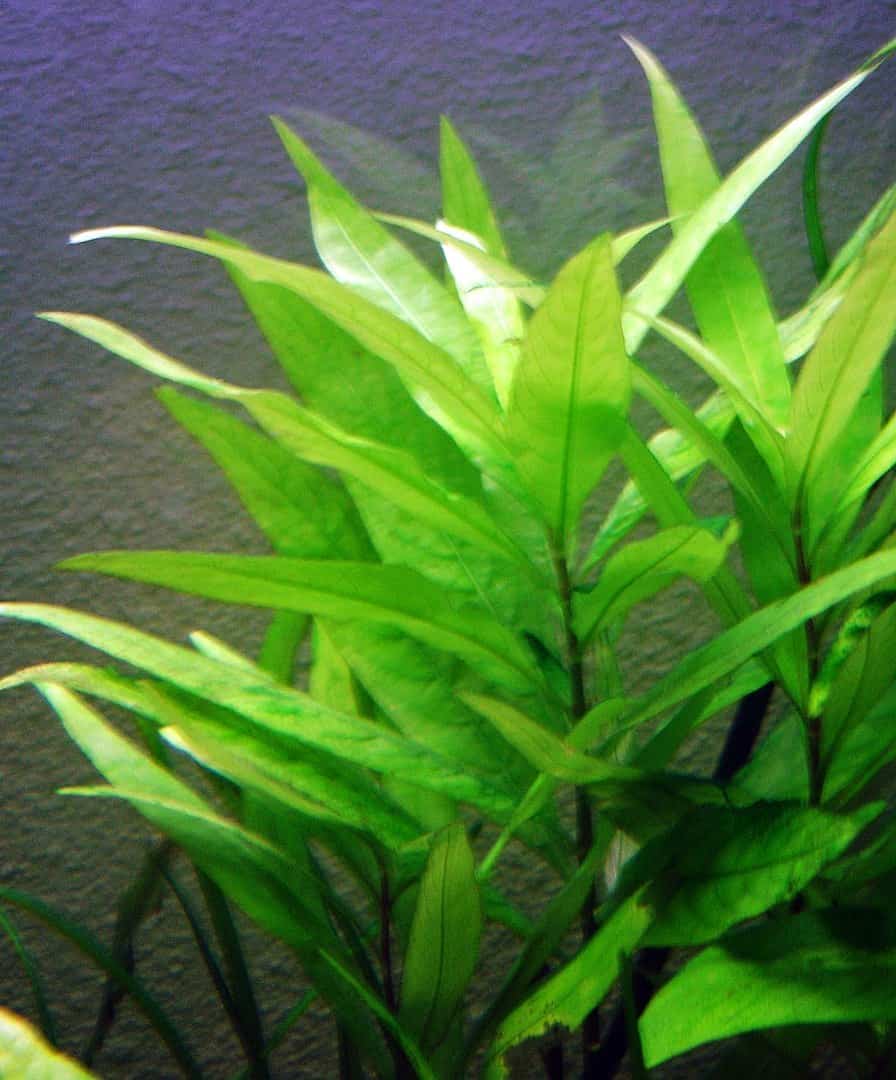
Sporting bright green foliage, both the Kompakt and Temple Narrow Leaf subspecies are nutrient sponges and will grow with undemanding maintenance. The Kompakt plant grows at a far slower rate than the Temple, and its shoots are shorter.
As both grow, particularly if emerged from the water, they may flower. You will notice that both grow several inches within a week-to-week timeframe, and there are some claims that the Temple variant can grow up to a foot or two in length.
Caring for Your Hygrophila Corymbosa
It’s care is so simple that it can grow in a wide range of conditions, to the point that it can be nearly abused and still survive and look good.
So, if you’re just starting out in caring for a planted tank, or simply looking for a plant to add to your tank that has a hassle-free care process, the Temple Narrow Leaf and Kompakt varieties, in particular, will be well-suited for a basic and undemanding care routine.
It’s quite hardy, resilient, and easy to grow, but needs to be trimmed regularly—we recommend doing so approximately once a week. It will need to absorb nitrogen, ammonium, and other nutrients to remain healthy. You’ll also have to add liquid fertilizer to your tank often for hygrophila to maintain its healthy distinctive green hues.
If you notice it begins to yellow, this is a sign of nutrient deficiency. However, it will regain its regular color over time as it grows, if you make a habit of regularly supplementing it with liquid fertilizer.
CO2, trace elements with antioxidant potential, and iron fertilizers, in particular, will help keep your hygrophila plant in tip-top form if you want to do the absolute best for this plant, but these aren’t essential.
Purchasing Advice
Hygrophila is available for purchase online and at most aquarium stores, for as little as three or four dollars. So you’re definitely saving quite a sum, especially if you opt to buy in bulk for your aquarium.
Since it’s so easy to propagate, you may also end up with supplemental plants to sell or gift to fellow hobbyist friends.
How to Add it to Your Tank
If you have an open tank, it could be kept semi-immersed. If left immersed, the lower leaves will die off although the plant is likely to flower. As a marsh plant, aquatic stores usually keep it immersed in nurseries, and when it’s first planted in your aquarium, the initial leaves might fall off the stem, but new leaves will soon appear.
Since the leaves are significantly large in most varieties, the stems shouldn’t be planted close together, as this prevents the lower leaves from receiving enough sunlight.
Plant it in order of height, with the taller ones in the back, and try to keep the lower plants as exposed as possible. Ideally, there should be two inches of space between stems.
Tank Mates and Compatibility
Hygrophila is suitable in most ecosystems of medium to large-sized aquariums, but it’s best to avoid placing it in a tank with goldfish.
Usually, goldfish like to nibble on this plant which, despite its hardy structure, can harm its attractive appearance.
Propagation and Reproduction
An important aspect of hygrophila corymbosa care is propagation, primarily by cutting off side shoots once they reach a length of about four inches.
The trimmed parts should be buried in the substrate. You may need to repeat this process as often as once a week or on a biweekly basis, given how rapidly it grows.
When you’re cutting, allow space for growth and make sure you’re stripping the leaves about an inch from the stem. Roots will usually form where the last node is situated, helping the plant remain situated in place.
You’ll find that new roots will form within just a few days. As new branches spread from the plant’s stem, it will become bushier in appearance.
Interesting Facts
- The word hygrophila is Greek for “moisture-attracting,” given the Greek roots words hygros and philein.
- It first began to be grown in US aquariums in the 1970s and is commonly cultivated among aquarium hobbyists in Europe as well.
- Some aquarists say that dumped surplus strands of hygrophila in their garden unintentionally led it to grow back to full-scale plants, with little intervention.
- While there are no proven risks of it as a possible invasive plant in agricultural settings, the United States Department of Agriculture deems it a potentially high-risk plant given that a number of assessment factors are unknown.
- The Blume variety was recently recorded in Mexican aquatic ecosystems for the first time. It reportedly poses a grave threat to the ecological situation in Mexican wetlands, given its fast pace of reproduction and dispersion.
Summary
This plant is a good option for beginners. It’s versatile and will thrive in a wide variety of environments.
If it’s basic needs are met, hygrophila will spread rapidly and keep even a large tank looking lush. If you have a medium or large sized tank that you might be struggling to keep looking healthy, rich and abundant, investing in this plant just might be a great idea.
How was your experience with hygrophila corymbosa care? Or if you’re still debating over making this minor purchase, are you now convinced to give it a go? Let us know your experiences and any other tips you may like to share. And If you have any questions, pleae do dop us a line in the comments section below. We’d love to help!
Happy fish keeping!

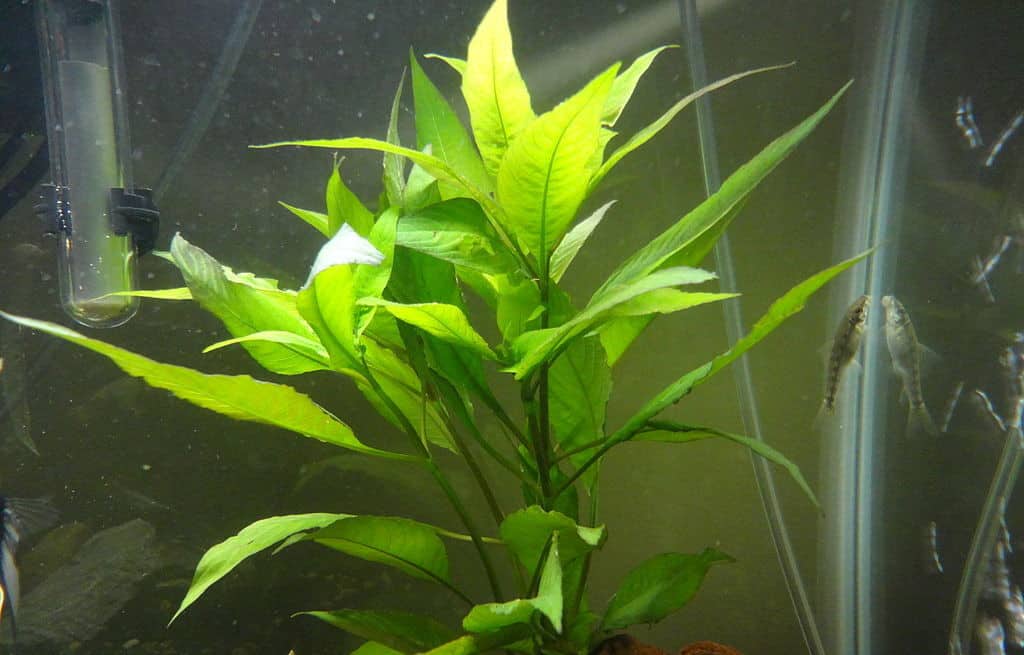
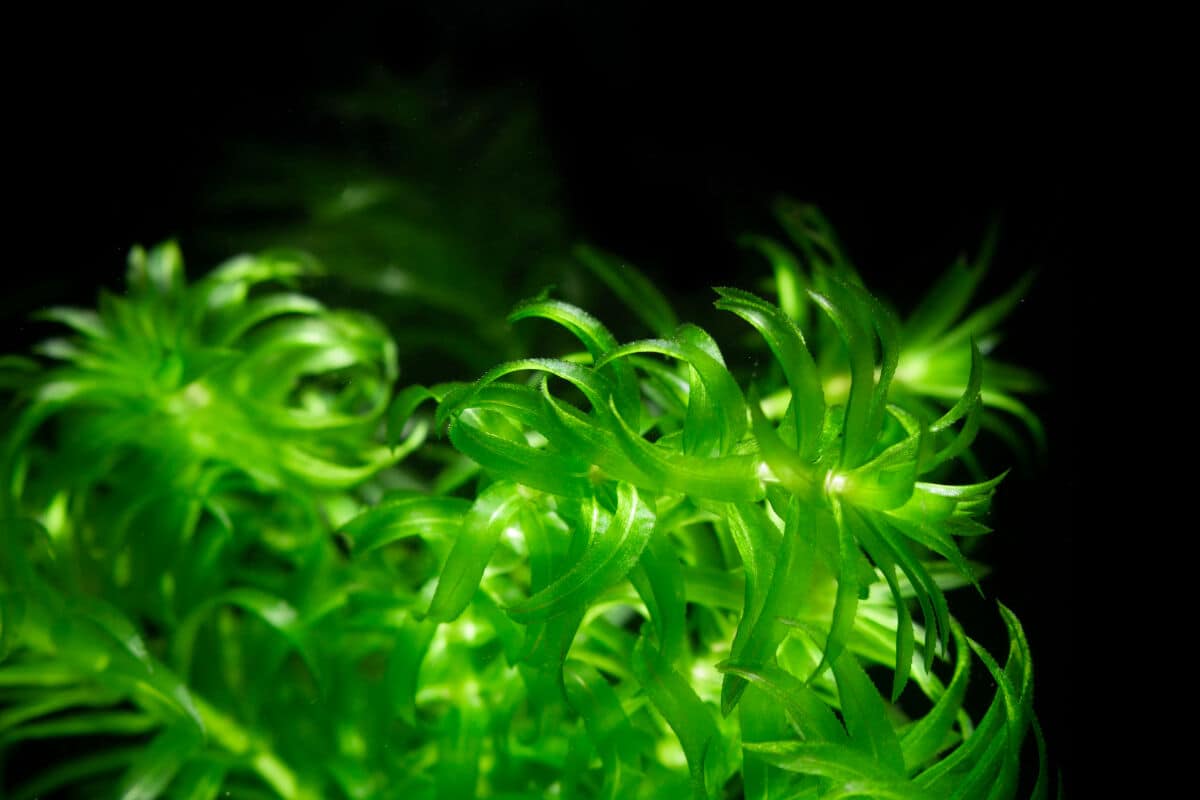
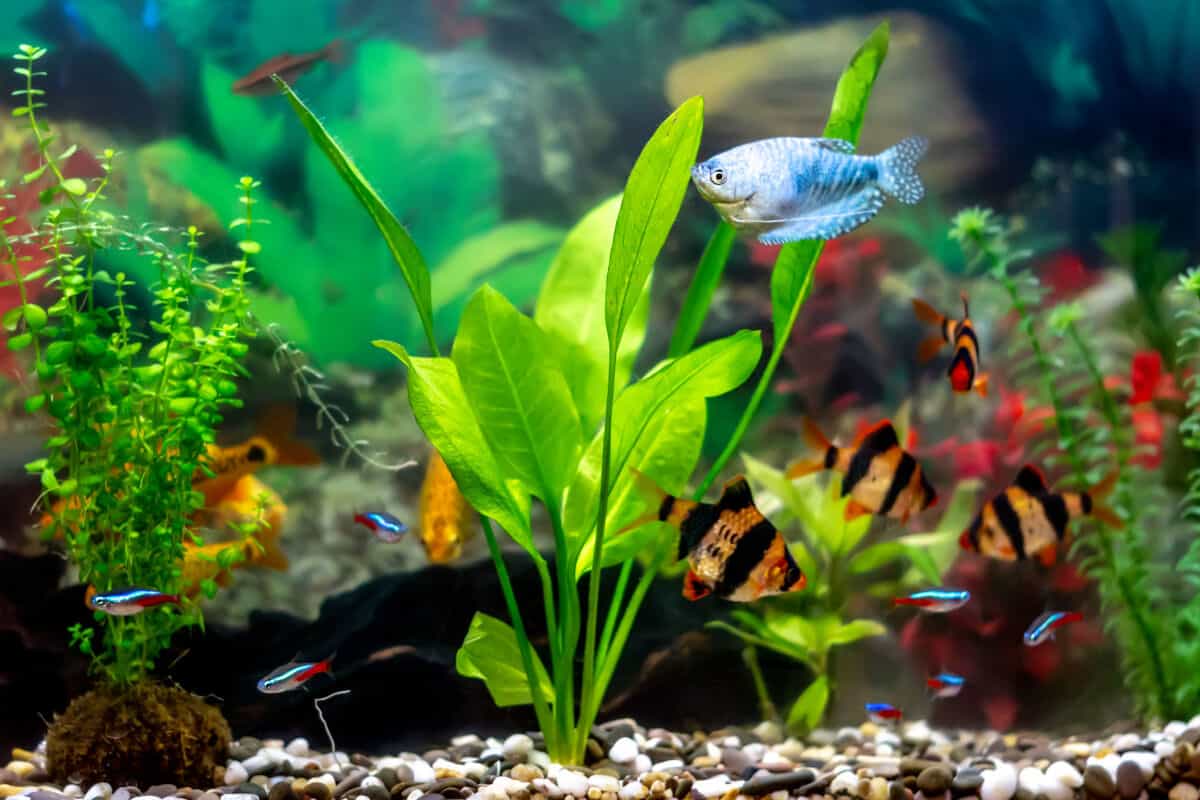
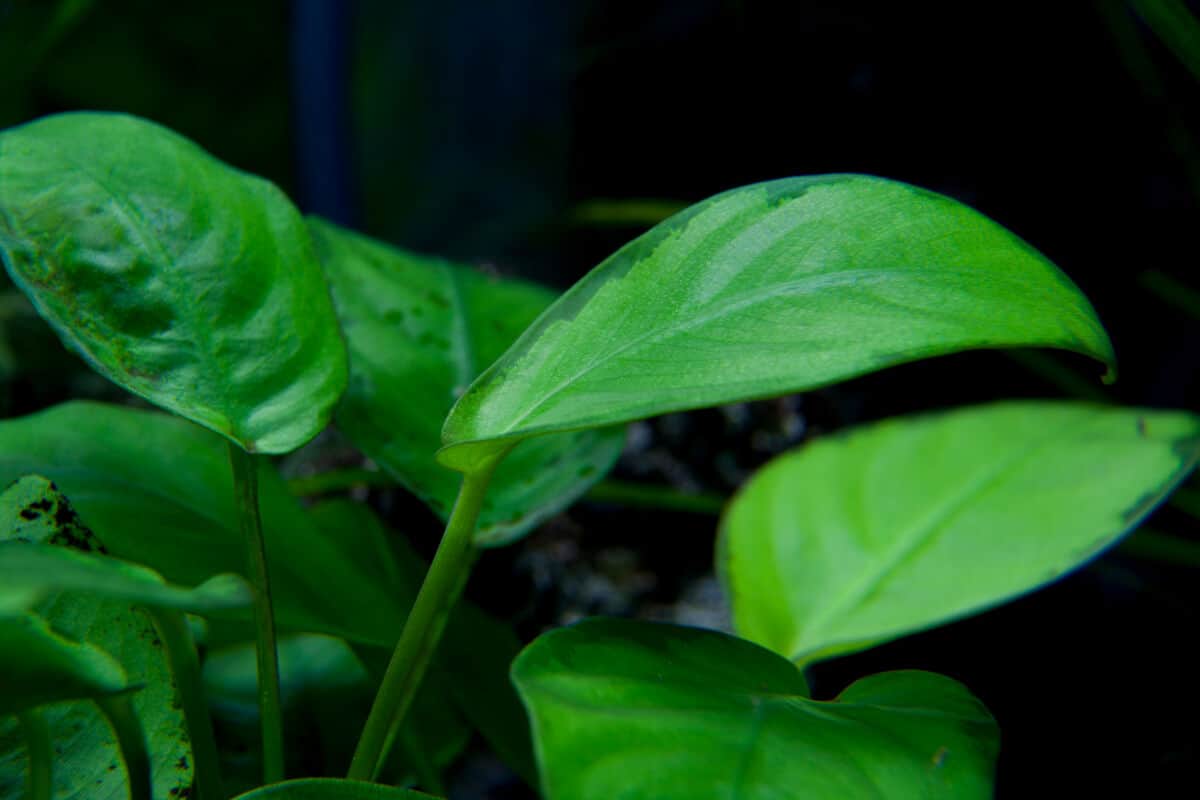
This is super helpful. I bought this plant from Petco but didn’t really know anything about it. Thank you for an in-depth article.